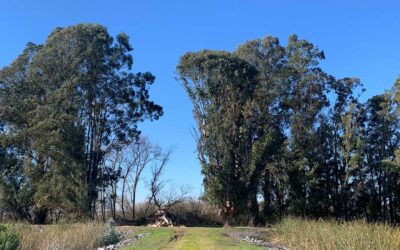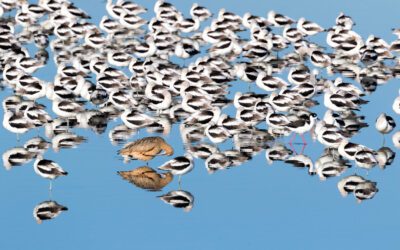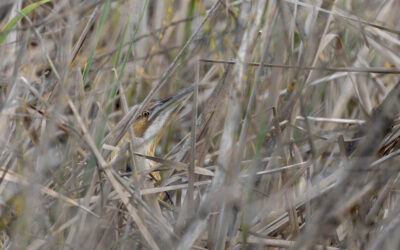From Peter Colasanti, August 2018
August is the month when birding rises back out of the summer doldrums in the Petaluma Wetlands as birds that breed to the north start their southward journey to winter quarters. Fall migration is much more leisurely than spring and richer, as hatch year birds boost populations to about double, so there’s more to see. Also, some of those newbies are lacking experience with migration or have faulty maps in their heads and so they make mistakes and wind up as vagrants. Well, most birders just love vagrant birds.
Shorebirds are the stars of the month, with 22 species recorded on surveys. Most must migrate extraordinary distances after their short Arctic summer and need to get a jump on the commute, staging to fatten up at local estuaries. Best of all, many are still in good alternate/breeding plumage and that makes them pretty and easy to identify. Pacific Golden-Plover often appears mid-month, frequenting the pickleweed-mud transition on Gray’s mudflat, among the larger Black-bellieds. Take a second look at any Semipalmated Plovers, once a couple Snowies touched down on the ShollPark central pond in route from inland salt lakes where they breed to the coast. Short-billed Dowitcher is best found in the wetlands this month, also watch for Lesser Yellowlegs with their cogener Greaters for easy comparison. Shollenberger Park is probably the best place in the North Bay to find the rare Semipalmated Sandpiper, first year birds exclusively. Baird’s seems to occur annually, usually on drier sites; Pectoral not so frequently. Wilson’s and Red-necked Phalaropes are both likely if there’s standing water in the central pond at ShollPark. Keep in mind that shorebirds typically roost during the high tide on islands in the central pond and time your visit accordingly. They feed on Gray’s mudflat at low tide, at great distance and in bad light.
Ducks are in eclipse plumage now and perhaps more difficult to ID than shorebirds. It’s a good time to concentrate on their structure.
Watch for early departing passerines, like Blue-gray Gnatcatcher and MacGillivray’s Warbler. Nobody’s found a Lazuli Bunting yet, but you could be the first. Pacific-slope and Willow Flycatcher both make pass through appearances starting in August. Look for most passerines in the willows along ShollPark’s east edge and the riparian corridor along Ellis Creek. The Adobe Creek riparian planting is coming into its own now too and worth a bit of your time.





0 Comments